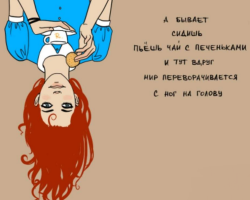Do the navel of the navel of the newborn cause concern? Information from the article will help you be more confident in yourself.
Content
- What does the navel in the newborn look like?
- Video: Care for the umbilical wound of a newborn
- When does the navel disappear in a newborn?
- When does the navel heal in a newborn?
- How many times to process the navels in a newborn? How to process the navel in a newborn?
- Why is the navel in the newborn blood? What to do?
- Why is the navel wet in a newborn? What to do?
- How to smear the navel in a newborn?
- Video: What is the best way to process the navel of a newborn? - Dr. Komarovsky
The processing of the umbilical wound is the first mandatory procedure that the young mother should learn in the hospital. In some women, it causes fear and uncertainty, because the newborn is still so small and fragile.
You should not panic and get lost, usually in manipulations with the navel there is nothing difficult. If it happens that the umbilical wound begins to cringe or get wet, together with the pediatrician it will definitely be possible to solve this freelance situation.
What does the navel in the newborn look like?
During pregnancy, the organisms of the fetus and mother are inextricably linked by the umbilical cord. Through this smooth and elastic cord 50-70 cm in length, the child breathes and eats.

By the time of birth, the umbilical cord consists of:
- umbilical arteries (these vessels are two pieces)
- the umbilical vein (it is through it that blood enriched with oxygen and nutrients enters the fetus)
- varton Stoydom (its function is the patronage of umbilical vessels)
Even in the process of childbirth, under the influence of the hormone, oxytocin, to which Warton's jacket reacts, the umbilical vessels narrow, atrophy of the umbilical cord begins.

But when the child is born, the functions of the reservoir are not yet lost, the umbilical cord pulsates, and the baby still breathes through it and receives the remains of nutrients. For some time, seconds or minutes, the newborn is in the so-called double breathing-he receives oxygen through the umbilical cord and through his own respiratory organs.
Important: doctors lead hot disputes about when it is better to cut the umbilical cord, finally separating the child’s body from the mother. Some believe that this should be done immediately after birth, others at the moment when the umbilical vessels stop pulsing. Each side has its own arguments. But in both cases the process is carried out in the same sequence

Observing the rules of aseptics and antiseptics, the doctor sets on the placenta a special clamp at a distance of about 2 cm from the tummy of the newborn, and then cuts the umbilical cord. The rest of the umbilical cord is first treated with alcohol in the Rodzal.
A small tail remains on the child’s tummy, which soon atrophies, dries and disappears. And if mom manages to provide the umbilical wound proper care, in the future the baby will have a neat umbilical cable.
Video: Care for the umbilical wound of a newborn
When does the navel disappear in a newborn?
The end of the umbilical cord (stump) is childish for 2 to 14 days after the birth of a child. This should happen spontaneously.

Important: before, women were in maternity hospitals for 7-8 days, or until the umbilical stump is disappeared. It is no secret that doctors often “contributed” to this event, removing the remnants of the umbilical cord with scissors or scalpel. Such actions they endanated the health of the baby
In no case can you contribute to the disappearance of the umbilical cord:
- If this happens until the vessels are completely mummified, the navel in the form of an open wound will become the “entrance door” to enter the baby of all kinds of infections
- There are times when intestinal rings fall into the umbilical cord. You can not talk about the consequences that will occur if it is cut
Today, young mothers and newborns, if everything is in order with them, is written out for a third day after childbirth. Therefore, in most cases, the umbilical stump in babies already disappears at home.

Before discharge, the medical staff must instruct the woman what care she should provide for the navel of the newborn. The pediatrician or patronage sister who will visit her at home in the early days should tell her about this.
Important: Before the child has a child’s end of the umbilical cord, it is better to wear special diapers for him for newborns with a neckline for a navel

When does the navel heal in a newborn?

Normally, the child’s umbilical wound should heal 2-3 weeks after the stump has disappeared, or by the end of the first month of life.
How many times to process the navels in a newborn? How to process the navel in a newborn?
The rules for caring for an umbilical wound, manipulation that contribute to its healing are simple. Young mothers master them very quickly, bring their actions to automatism.

So, in order for the umbilical wound to the crumbs to heal safely and quickly, parents should:
- Give the child to breathe. The possibility of conducting air baths and their duration largely depends on the temperature conditions of the house and the baby's reaction to such procedures. If the room has more than 20 degrees, five -minute air baths can be done from 3 times a day or after each diaper shift. In summer, the duration of the procedure can be 20 minutes - half an hour
- Dry the navel with a perhydrough and lubricate with green. It is believed that this needs to be done only if, after the abdominal falls inside the umbilical ring, the baby formed a crust of sprayed blood. But doctors often recommend this procedure for preventive purposes for 2 weeks after falling off the umbilical stump. Each time after changing the diaper, mom picks up hydrogen peroxide and drips a few drops inside the child’s umbilical ring, then gets wet with a sterile bandage. Next, the navel is processed with a cotton swab moistened in green

Hydrogen peroxide removes a crust of dried blood on the navel of the newborn. - Wear the child in clothes made of natural fabric. Synthetics can lead to rubbing the navel or the appearance of diaper rash in it
- Bathe a child. Water procedures during the healing of the umbilical wound are by no means contraindicated. You can arrange a swimming baby from the first days of his life. So that in the wound, an infection does not get into the site of the falling umbilical cord, for water procedures for the newborn, you need to use boiled water. You can add decoctions of herbs with dry and antiseptic properties to it, if there are no contraindications to their use
Important: if my mother noticed that the navel of the crumbs heals for too long, he became inflamed or blood, seals arose in his area, you need to call a pediatrician
Why is the navel in the newborn blood? What to do?
If the first few days after the rush of the navel in the baby is somewhat bleeding, there is nothing wrong. The natural healing process of the wound occurs. If she continues to crush after 7 days and longer, this condition is pathological, formed for such reasons:
- Thick resent and umbilical cord. In this case, healing is slower
- Mechanical damage. The crust on the umbilical ring can be removed by negligence during changing clothes, bathing, and tuple processing. The kid himself can disrupt it while lying on the tummy. The crust can also get off due to friction about diapers
- An infection fell into the umbilical wound. Mom should alert the unpleasant odor of the lords released from the navel, the presence of purulent secretions, redness and hyperemia of the skin around the umbilical ring, an increase in temperature in the baby, a general deterioration in his condition. The crumbs may have purulent omfalitis - infectious inflammation of the bottom of the umbilical wound

- Umbilical hernia. Its true sign - during crying, coughing, other physical effort of the baby's navels sticks out and increases to the size of the walnut
Important: sometimes in order for the navel to stop crushing, it is enough for mom to change the tactics of caring for him. But there are times when a child needs qualified medical care. Therefore, if the blood is released from the umbilical wound longer than 5-7 days, the baby needs to be shown to the doctor
Why is the navel wet in a newborn? What to do?
- If there are serous discharge from the umbilical wound, they say that the navel in the baby is wet
- This can happen for the same reasons for which the wound on the site of the blood umbilical stump of blood
- Wetting navel should also be treated, otherwise serous discharge will create a favorable environment for the propagation of microorganisms that cause the disease
How to smear the navel in a newborn?
The pharmacy has a lot of means for processing the navel of the newborn. For preventive purposes, they use:
- solution with diamond green
- potassium permanganate
- decoction of a series

So that the umbilical wound is not blood due to infection, use:
- chlorophyllipt solution
- ethyl alcohol
- local antibiotic Baneocin
- other drugs prescribed by a doctor








